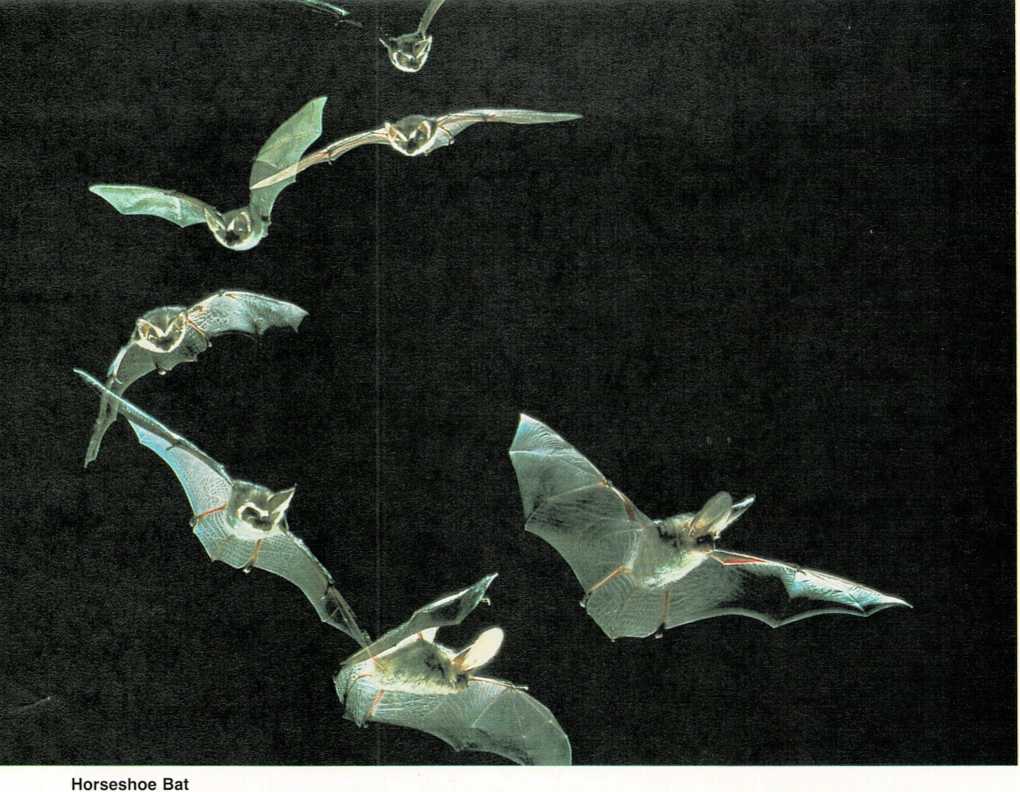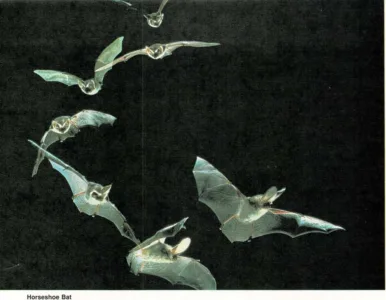
Listen!
A bat flies through a cave. Long, sharp rocks hang from the roof. Other
rocks stick up from the floor. The cave is darker than night. If you
were there, you wouldn’t see a thing. But the flying bat doesn’t bump
into a single rock.
How does the bat tell where the rocks are? It hears them!
As the bat flies, it makes tiny squeaks. If a rock is ahead of the bat,
the squeak bounces off the rock and makes an echo. The bat hears the
echo and knows something is there. The bat flies around the rock.
A bat’s ears can hear sounds that you can’t. If you were in the cave
with the bat, you wouldn’t hear either the bat’s squeaks or the echo.
Birds can hear better than humans, too. Have you ever seen a thrush or a
blackbird stand with its head to one side? It’s listening to a worm
crawl. The bird hops toward the noise and pulls the worm from its hole.
A bird’s ears are two little holes, one on each side of its head.
Deer, big-eared rabbits, and many other animals need good hearing to
keep from being eaten. They can move their ears to listen for the tiny
noises that may mean a wolf, bobcat, or other enemy is near. Then they
can run away or hide from the enemy.

Dogs can turn the open part of their ears to the direction a sound is
coming from. This dog is not hearing anything special.Someone is saying the dog\’s name very softly. The dog’s head does not
turn. The dog’s ears move to catch the sound.

